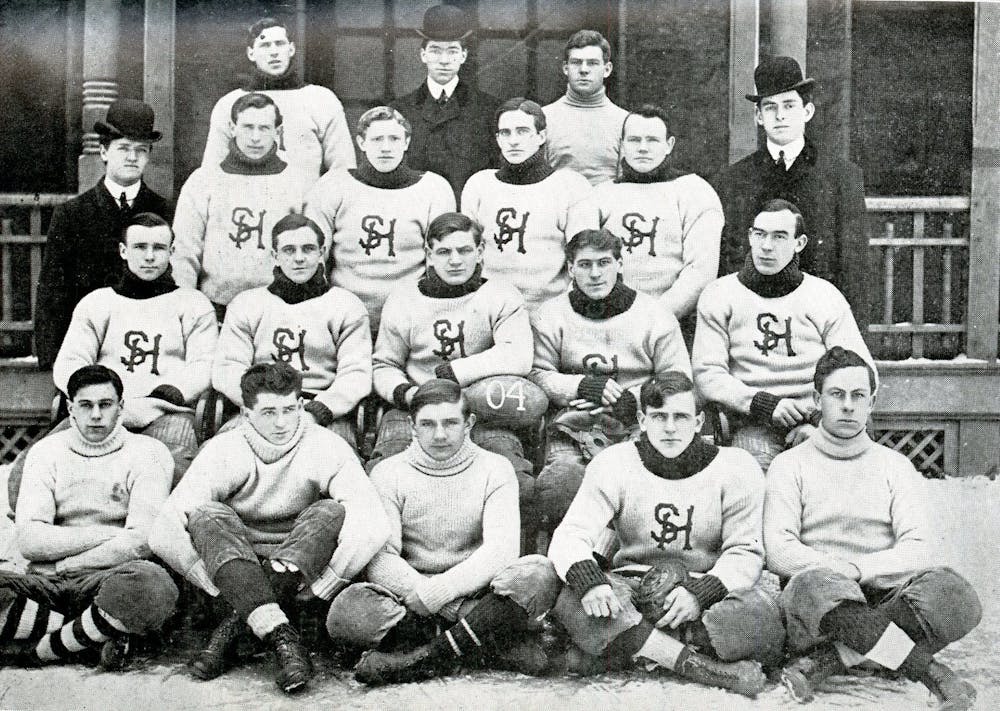Seton Hall is a basketball school through and through, but did you know that they used to have a football program?
The Pirates took to the gridiron in 1882 and had quite the rough start. They lost to Fordham twice in the only recorded games for the year and went on to get blown out in the first game of the 1883 season, as they lost 60-0 to Stevens Institute.
There’s a lack of coverage for most of the teams’ early years, but the newspapers made sure to write about how the Pirates forfeited a game in 1891. One of Seton Hall’s running backs, Wickham, rushed for 40 yards before fumbling and losing possession. Seton Hall insisted that Wickham was down before letting go of the ball, but the referees refused to listen. Just two minutes into the game, Seton Hall was outraged and left the field in disgust.
Although Pirates’ football wasn’t exactly a hot commodity around the time of the program’s inception, their fortunes changed in 1896. They only had 4 recorded losses across a 4-year stretch from 1896-1900, shutting teams out almost every game.
The Pirates started having games against a SHU Alumni team in 1900, and the current players always came out victorious. Seton Hall won in dominant fashion, 20-0, in their first matchup. Gene Kinkead became the team’s first head coach at the time and would also coach them in 1901 and 1905.
Despite the Hall’s success, the school made the decision to drop the football team in 1906. The team would return for one season in 1913 but would get canceled and prohibited by the university the following year.
After nine long years, the team made its grand return in 1922 with a 30-0 victory over Cooper Union. They didn’t do anything crazy over the next few years, besides shutting out the alumni team 53-0 in 1925.
Beginning in the 1960s, they started to play more recognizable programs like Georgetown, Providence, and Saint Peter’s. They started competing as a club football team, hence why their opponents were different.
In 1972, the Hall had their most successful season in nearly 70 years. In front of 3,000 fans, they played in the Empire Bowl Championship against Marist, coming out victorious in a tight game, 20-18.
The Pirates made the jump to become an official NCAA team in 1973 due to their success. They only had one good year for the rest of the team’s history, which was a 7-2 record in 1974.
The final years of the program were especially rough, like when they went winless in 1980. The team started a few different quarterbacks, though each struggled. Carl Zambelli started the most games and posted a 5-to-14 touchdown-interception ratio. Interestingly, Zambelli punted for an average of 34 yards on the season, starting in two roles for the team.
In the program’s final season, they weren’t much better than the year prior, as they went 2-7. They posted just 9 touchdowns on the year and lost their final game to William Patterson College by a score of 7-30.
The Pirates struggled plenty throughout the team’s history, but the team still had a valuable role as part of the school. Many of the team's opponents are still relevant today in various sports and especially from the BIG EAST, though it's known for basketball now.
Matt Soetebeer is the assistant sports editor for the Setonian. He can be reached at matthew.soetebeer@student.shu.edu.





